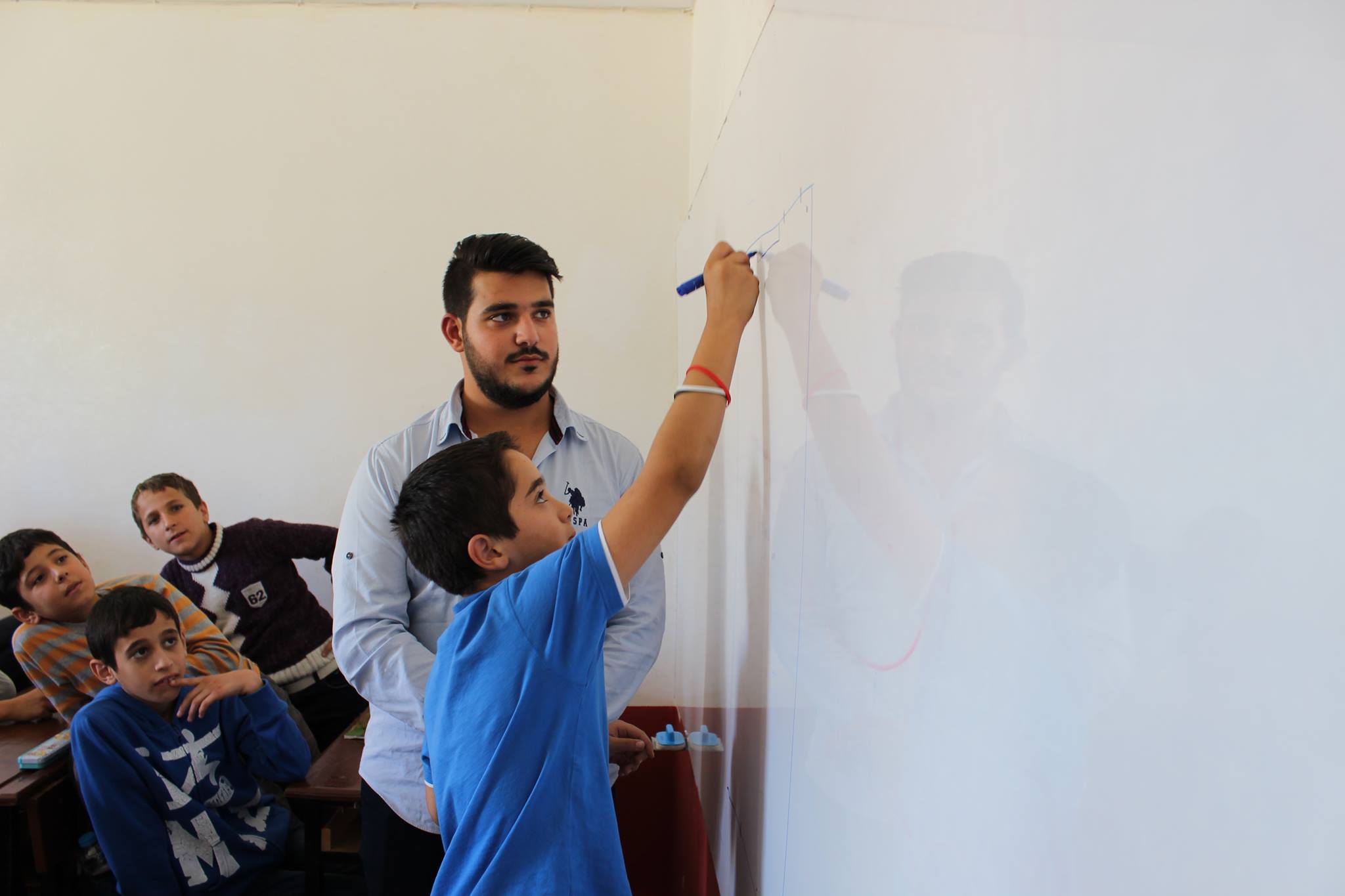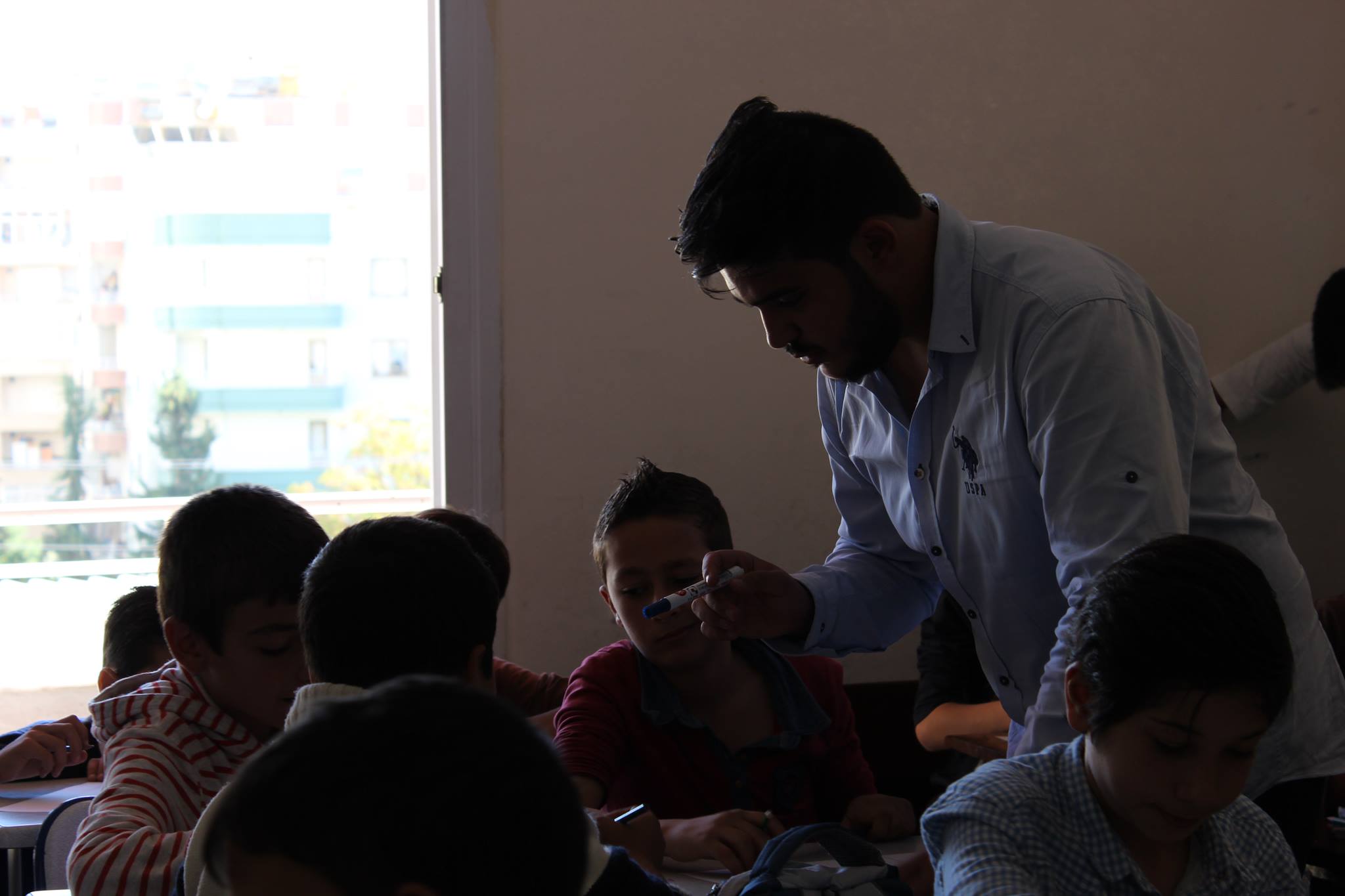In 2015, The Aleppo Project interviewed Omar AlJaloud, who was part of a volunteer group providing Syrian children in Turkey with educational training that would provide them with novel tools of expression and expose them to different perspectives. Since this group of volunteers specializes in Architecture, they wanted to conduct their training in a simplified way to the children in order to get their perspective on the future of Syria after the war. The students were Syrians from different backgrounds in Mersin. For five months, the class met weekly to learn the basics of architecture, design and drawing. By the end of these sessions, children were required to submit designs of their own imagined buildings.
“They have ideas that graduate students don’t have. They had really amazing ideas that we can utilize in the future!” This is how Omar responded when he was asked about the designs submitted by the children. On the ideas that children came up with after the training, Omar added that one of the models submitted by the students was a generator that turns heartbeats into electricity.
While the idea might seem inapplicable, or highly unimaginable, these proposals reflected how deeply children are affected by the ongoing war in Syria, and how this war, regardless its tragedies, created a burn out platform for these children and agitated their creativity. “In one of the sessions, we asked the children what you want to design. One child said I want a secret room. I asked, why do you want a secret room in your house? The child replied, because when the army attacks us, I want to have a safe shelter where I can go with my family”, Omar added. The winning design was of an unconventional school facility designed by 7th grade students.
Regardless how young these children were, the project gave them a stake to hold in their future; it made them draw a picture of the new Syria they would prefer to live in after the end of the war. While most of the children said they wanted to be architects in the future to rebuild Syria, one expressed his desire to become a cop in order to serve people in a “good” way, unlike the bad cops he used to see around. During the interview Omar expressed his desire to expand these sessions and apply them in different Syrian schools in order to train as many students as possible.
After contacting Omar recently, he said that unfortunately the project has stopped after they finished the sessions because of the lack of funds. “In order for this project to continue working in the large scope we planned for, we need many grants in order to support and sustain these efforts.” At the moment, Omar is volunteering with a Gaziantep based INGO delivering financial support to Syrian and Turkish families in poor districts in Kahramanmaraş, but he still thinks that the experience he had during teaching these kids about architecture is positive and could yield further outcomes if repeated in the future.
Omar completed two years of his architecture degree in Syria, and another two in Turkey. He expressed that this experience allowed him to combine the two perspectives of practice and education in the two countries, and he would love to start his graduate degree, also in architecture, in Europe to gain yet newer perspectives on urbanism and architecture, even though it will not give him the same unique perspective he gained while interacting with these children.
 The Aleppo Project
The Aleppo Project
